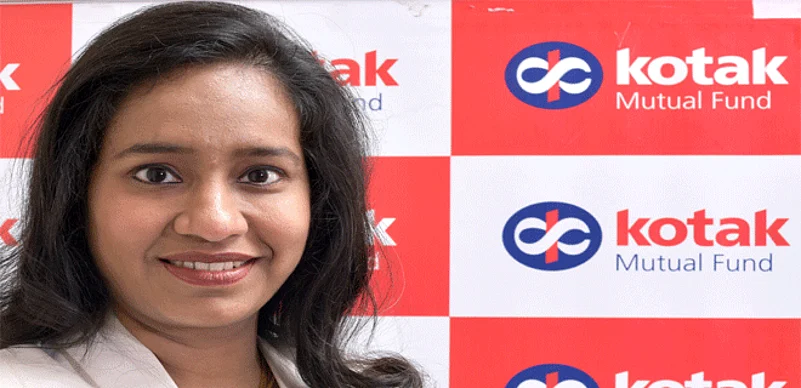In a situation where the interest rates are falling, what should the retail investor do regarding his debt investments? In a chat with Anagh Pal, Lakhsmi Iyer, Chief Investment Officer (Debt) & Head Products of Kotak Mahindra Asset Management Company (KMAMC), tells us about her perspective on the interest rate scenario and how investors should manage their fixed income investments.
1. Where do you expect the interest rates to move going ahead?
We have seen a rate cut at a time when RBI has moved from accommodative to neutral. RBI has not categorically given any stance of their policy or given any indication as to what would be the next course of action. So the markets will continue to hinge on the fact of what is RBI’s target on CPI inflation which is the headline number, what is the number that is going to be the likely outcome by March 2018 and therefore given that matrix, if there is a scope for further rate cuts. If you look at it purely from that matrix and it is all conjecture based on what kind of inflation numbers we are likely to see, it seems that there could be one more rate cut. And that is emanating from RBI’s threshold level of inflation and the final inflation, we are likely to see over the next six months. My sense is one more rate cut by March 2018 which will be agnostic of timing, because it is going to hinge on this and also take cues from global factors.
2. The equity markets have been touching new highs recently. What has been the perspective of retail investors? Have we seen more retail investors shifting to equity?
The equity markets have delivered consistently in the last few years. But, when you consider it from the point of asset allocation, however much you are bullish and however much you remain constructive on equities as an asset class and however aggressive you are as an investor, it definitely makes sense to have moderations in anything that you do. So we believe that even if you are aggressively tilted on the equity side, you should still have a fixed income allocation.
We have been seeing allocation into debt funds, from the retail fraternity. Compared to equity, the account is much lower, but investors are recognising the fact that they cannot get lopsided. There was a time when equity was a complete no-no and it was completely fixed income, that is also not appropriate and if someone has a thought process that one needs to do only equity, even that is not appropriate. This is not just linked to your age. It should depend on your risk appetite; your goal and what kind of investment horizon you have for that goal and the time for you are going to part with your money.
3. Have you seen an increased participation in debt funds?
We have seen retail participation in debt mutual funds grow. It is not by leaps and bounds yet. Banks have cut deposit rates and retail investors who are predominantly debt in nature and want to diversify out of traditional banking deposits have moved into fixed income mutual funds. This shift is slow but steady.
4. What kind of returns do fixed income mutual funds offer?
The lowest in the pecking order in terms of risk and therefore it will also give low returns, is the liquid fund category which is the closest comparable to a savings account. Then you have short term funds, then corporate bond strategies and then gilt and bond funds, depending on the amount of risk you take on the interest rate front. So liquid funds offer the lowest rates of returns, while guilt and bond funds offer the highest, while corporate bond funds come in the middle. Three key risks that the retail investor has to keep in mind are the credit risk, liquidity risk and interest rate risk. Liquidity risk is by and large, well managed by the mutual fund industry, because open ended schemes have daily entry and exit, so liquidity should not be much of a concern when you are dealing with mutual funds. One has to take the other two risks into consideration. The investor has to be aware than in fixed income the capital is never lost until there is a credit default.
5. What should the retail investor do in a falling interest rate scenario?
Fixed income is the kind of investment that offers solutions to any kind of interest rate scenario, rising, falling and stable, so usually when interest rates are falling you need to protect yourself from the reinvestment risk. So you need to elongate your maturity profile. If you are in liquid funds you will go to ultra short, then you will go to short, then to long. But if you go from short to long fund you need to be very clear that you would need to have a 3 year kind of horizon. In a rising interest rate scenario we have fixed maturity plans. These are strategies which help people mitigate their interest rate risks to a large extent. In today’s market scenario when we are expecting the interest rates to be either benign or slightly on the trajectory of the lower side, we are recommending to investors the combination of corporate bonds, accrual fund strategies and short term funds. There are two reasons for this. Since the maturities for these are in the band of 2-3 years typically, they will give you a more stable ride on the market because the exposure to interest rates are much lower. It is a proven strategy to deploy that in this kind of a market scenario. PPF provides good guaranteed returns so that should be a part of one’s debt portfolio, but having exhausted that, other options should be considered.
6. What would suggest senior citizens do to keep their retirement income stable?
There are options called monthly income plans which are hybrid products with marginal equity, there are also something called systematic withdrawal plan in the industry on the fixed income side, which even senior citizens can use. The only thing that is unfixed about fixed income is that it cannot assure returns. So it is very difficult in a falling interest rate scenario to consistently maintain a rate of YTM or the rate of interest in terms of even the dividends that they take home. So one can put in a lump sum in a hybrid fund with marginal equity (20-25 per cent) or in a corporate bond based accrual strategy and use a systematic withdrawal plan, monthly or quarterly as the case may be. Most of the fund houses are providing this and I think it is a good option for senior citizens to go for, because these are investors who would not like to risk too much of their capital, they want a steady income stream.






























